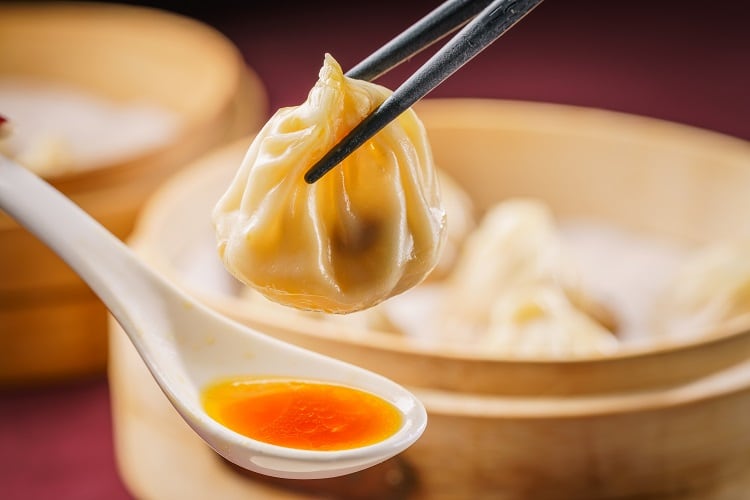Signalling advancement potential for retailers, researchers from the Technical University of Denmark (DTU), the University of Copenhagen and Caltech have ‘taught’ an algorithm to pick out flavour notes from wine.
With applications to personalise beer and coffee connoisseurs' purchases, the researchers’ findings raise interesting potential for taste and flavour opportunities in the broader food sector.
Seeking to solve the paradox of choice and cost versus value struggle in the food retail environment, the algorithm aims to help consumers choose optimal-tasting products when scanning various unfamiliar labels on the physical or digital shop shelves.
AI in taste applications
As we head into 2024, consumers’ expectations for their chosen food and drinks’ taste profiles are evolving, informing producers of upcoming and existing formulations.
“With the growing trend of artificial intelligence (AI) being integrated into our everyday applications, consumers are expecting even more accurate personalisation in the recommendations they receive,” Thoranna Bender, a graduate student at the Technical University of Denmark (DTU) who conducted the study under the auspices of the Pioneer Centre for AI at the University of Copenhagen, told FoodNavigator. Applications within the food and drink sector are no exception.
In the wine sector, the researchers have seen how AI apps like Vivino, Hello Vino, and Wine Searcher can help shoppers receive information about products, anticipate how they will taste and read reviews.
Scientists in a recent study have demonstrated how consumers’ impressions of flavour can add a new parameter to the algorithms, making it easier to find a precise match for consumers’ taste buds. Having a system that can mimic how humans perceive flavour is an important step towards this goal, Bender said, not only when considering wine but also other beverages such as coffee and certain foods or dishes.
“Additionally, there is a growing trend towards health-conscious and sustainable options, influencing the taste profiles consumers seek,” Bender relayed. Producers might also integrate more plant-based alternatives and explore innovative flavours to meet these evolving demands.
Creating an algorithm to ‘taste’
Researchers at the University of Copenhagen collected data on human flavour perception through flavour similarities to advanced personalisation. The initiative is also inspired by Vivino’s mission to better understand wine flavour by gathering more diverse data sources that can give information about flavour. As such, the researchers had access to an extensive database of images of wines and user reviews about them. However, they did not have data directly representing the human flavour perception.
Large pre-trained models are yet to capture a powerful feature representation in the food sector. Food applications, therefore, have the opportunity to explore possible data sources and how these can further advance personalisation in these types of applications.
Telling and teaching a machine taste
As part of the study, scientists gathered data sources that are human-annotated flavour similarities. They did this by hosting seven wine tastings with 256 people where people arranged samples of wines on a sheet of paper.
By blending together user reviews, images of wines and these human-annotated flavour similarities, the University of Copenhagen’s algorithm FEAST can map out flavour similarities in alignment with how humans perceive flavour. FEAST took images of wine, users reviewed the wine, and scientists collected human-annotated flavour similarities and placed them into a shared representation.
In this shared representation, wines close together are similar in flavour, while wines further apart are unaligned with how humans perceive flavour, a method known as napping in the field of sensory science.
“Modelling flavour is a complex task as taste and flavour are subjective and can vary from person to person,” said Bender. “Factors such as culture, age, previous food and beverage consumption, and lifestyle all play a significant role in how individuals experience flavours,” Bender added. The researchers believe their dataset and FEAST algorithm serve as a first step towards the goal of modelling flavour accurately.
The researchers’ findings underscore the potential of multimodal learning, with its human annotations boosting the accuracy of wine predictions, offering the most accurate representation when combined with text and images.
Future of food flavours?
The research type the University of Copenhagen’s algorithm explored has multiple use cases within food and beverage applications, such as food quality control, beverage recommendations, personalised nutrition and recipe suggestions.
Using product recommendations as an example, consumers in-store, faced with a variety of options, can receive recommendations for new products based on personal preferences.
Consumers may also want to identify low-cost alternatives for their favourite products with the same flavour characteristics. Adopting algorithms in-store could do this by simply finding the most similar product in terms of flavour that is within the consumer’s budget. For example, coffee shoppers can utilise this technology to identify coffee beans from a lesser-known coffee-growing region that shares a flavour profile with prestige coffee beans.
Detecting fraud is another potential application for this technology. Using the study as the backdrop, Bender says that wine fraud is a significant issue where poorly made wines are sold at high prices. In other food sectors, the ability to map flavour similarities could assist with distinguishing between authentic and counterfeit products.
“Another interesting application worth mentioning is the democratisation of the connoisseur experience,” Bender said. Although people often assume that to appreciate certain products fully, you need to know a lot of fancy terminologies, Bender says this is not the case with this technology. “With techniques like Napping+FEAST, laypeople can use their sensory experiences to navigate complex flavour landscapes, discovering the fancy terminology on the fly rather than needing to know it upfront,” added Bender.



